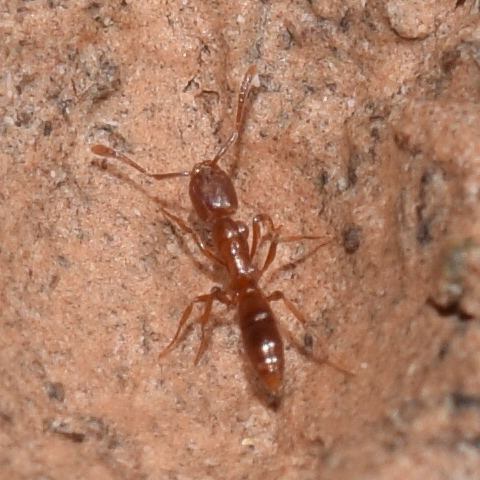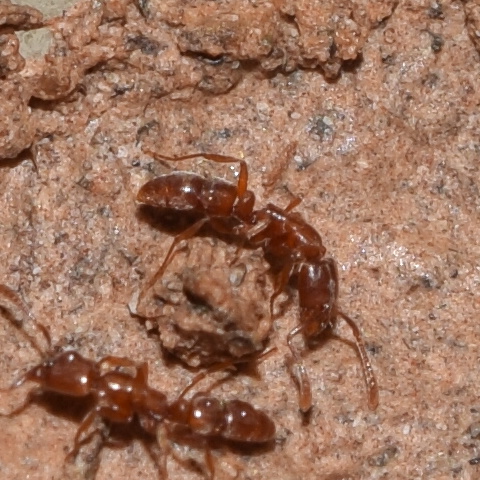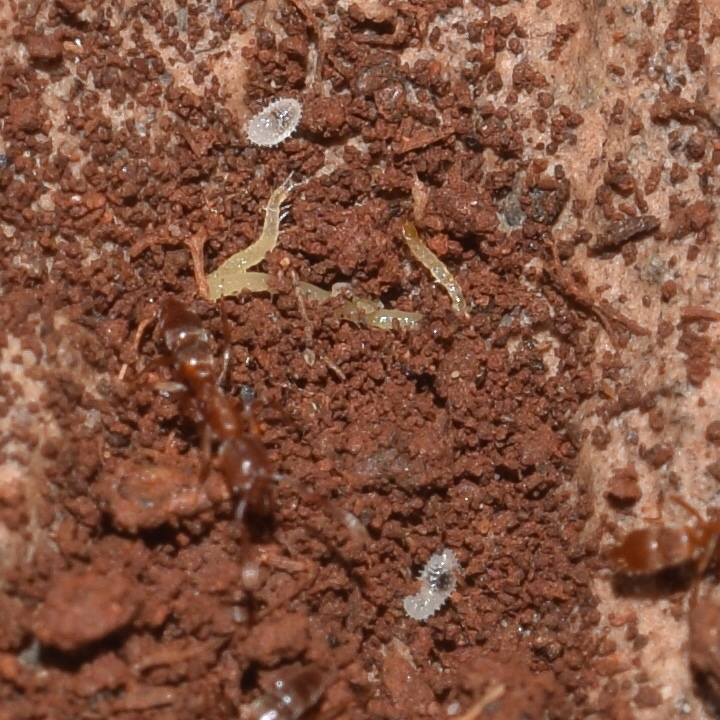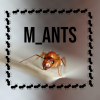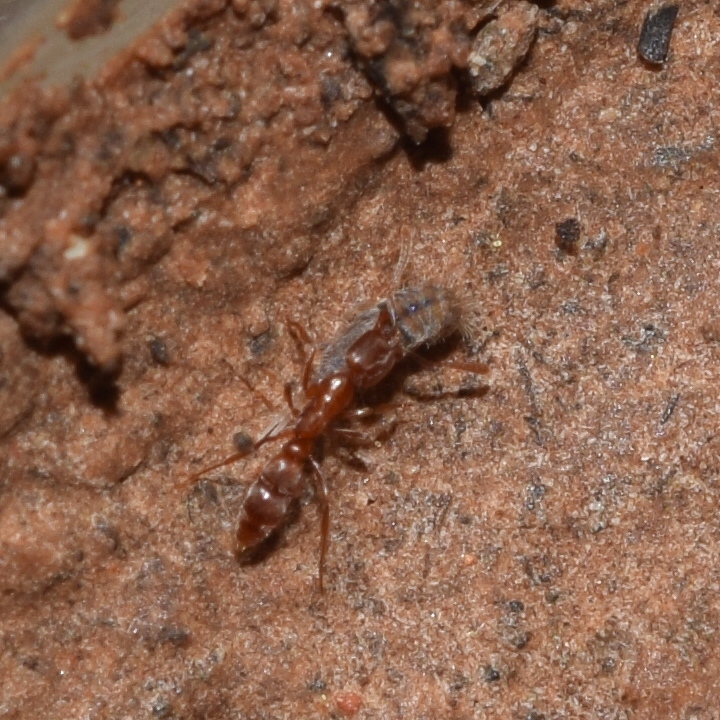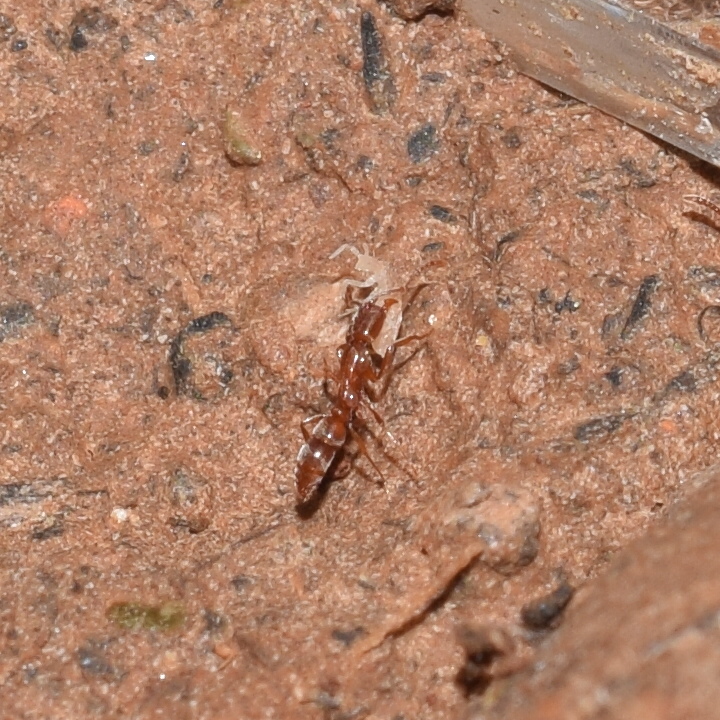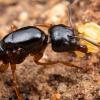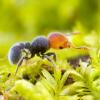Dug up a very small 22 worker colony of these from under a foot or so of soil. Sadly I was unable to locate any obvious gyne or reproductives, so for now this colony will likely be doomed. However considering I've never been able to see a gyne of this species despite multiple very thorough excavations, I decided to keep these guys and see if they can somehow lay eggs. As of now they have a clump of eggs and 4 larvae. They are also covered in some beautiful phoretic mites, which is a nice compensation for the lack of a reproductive.
Edited by ponerinecat, November 7 2020 - 4:40 PM.




